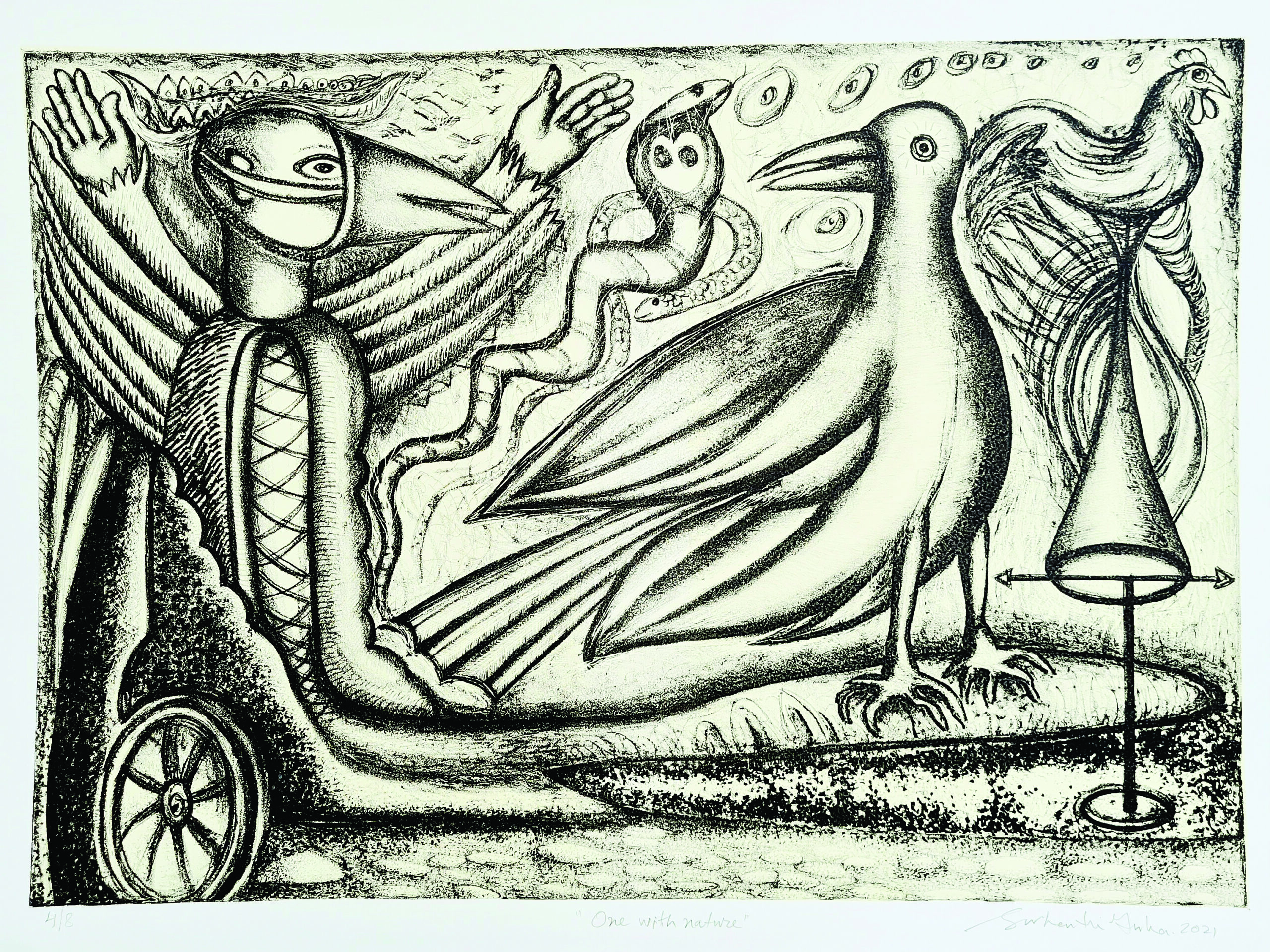
The upcoming art exhibition, Members of Multiple Encounters present the art show “Rupantar Panch Dashak: Five Decades of Printmaking.” It promises to be a captivating showcase of talent from Anandamoy Banerjee, Kavita Nayar, Moti Zharotia, Dattatreya Apte, and Sushanta Guha. The Visual Art Gallery in New Delhi will host this event from May 7th to May 14th, offering art enthusiasts a chance to immerse themselves in a diverse range of printmaking styles and expressions. The exhibition is curated by Alka Pandey.
Contemporary Printmaking in India and the works of the printmakers living in India scrutinize the living reality, which is diverse, but direct and different position of art confront the viewer in an overwhelming and dizzying fashion-exciting that it contrasts the work of major printmakers with widely disparate styles. This is the moment of aesthetic distance that provides the narrative a double edge. Printmaking is meditative, explorative, and creative and can incorporate carving, painting, drawing and using one’s full artistic potential to create a work of art. The staging of the otherness and alteration that constitutes in these prints, for us serve the essential aspects of a fictional universe. The beauty and ideas of these works in this exhibition titled ‘Rupantara- Five Decades (1980-2024), an exhibition of works by Multiple Encounters’ curated by Dr Alka Pande are extreme promises of post independent nation. Anandamoy Banerjee, Kavita Nayar, Moti Zharotia, Dattatreya Apte, Sushanta Guha of Multiple Encounters that came later after the eminent Printmakers Guild speak from the depths of the soul and reaches out to us to a world of infinitely rich theatre of their soul that weave and re- weave a potent spell for all of who dare to share in the drama. It also reiterates the contribution of Prof. Jagmohan Chopra and Group 8 in Delhi, and their mentors Somnath Hore. Sanat Kar, Anupam Sud, Jai Zharotia.
It is truly refreshing to come upon such deep enduring work of Kavita Nayar in the ‘up to the minute’ climate of the present, her aim has been to inhabit, and share with the viewer, a pictorial space that is ever-renewed to the rumbling of her soul. It helps her to undergo some changes deep inside her and ripen by solitude extended by a vivid repertoire of that resonates with multi-layered images and abstract forms mostly done in oil pastels on paper and multilayered etchings. She is a reliable and clear sighted guide to that exploration of our innermost mind as well. The impact is immense.
Dattatreya Apte never allows the visual text to become inactive. A founding member of the Indian Printmakers Guild, there is an element in him that makes his work both resistant to categorization yet intellectually irresistible. From the late 80s to the present his personality expressed through drawing, painting, and printmaking has presented a challenging conundrum to the viewer. Regarding his photogravures he made earlier, the light which falls on the body belongs to the light, shadows cast by the body in response to light is absence of light thus reinventing the art and space. It gives us a feeling of catharsis, purification of soul.
In Sushant Guha’s compelling drawings, and lithographs there is a faithful bonding to expressionistic- figurative markers, he vitalizes them with strong rendering of lines, seemingly innocuous portrayals and at times a mingling of both on a single stone sometimes a space is not to be viewed simplistically as work of an incurable romanticist that yields several possibilities, in turn giving rise to polemical queries that demands a sort of substantiation.
Anandamoy Banerji consciously lives in his times and wishes to engage with events rather than withdrawn or detached from them, the times are fraught with new as well as abiding traumas. The quality of his attention, the unlikely subtlety and boldness, the harmony created of tensions, ambiguities, volume, light, elusive moments speaks of an alienation, a simulacra. He depicts them with extreme sensitivity. Swinging between distance and intimacy, his works deal with the politics of identity, sexual subjugation and gender.
There has been of late, a gentle transition in Moti Zharotia’s oeuvre. A search for a lustre suffused with a meditative, dynamic equilibrium of forms and a measured progression, he craves for the depth of the ocean.